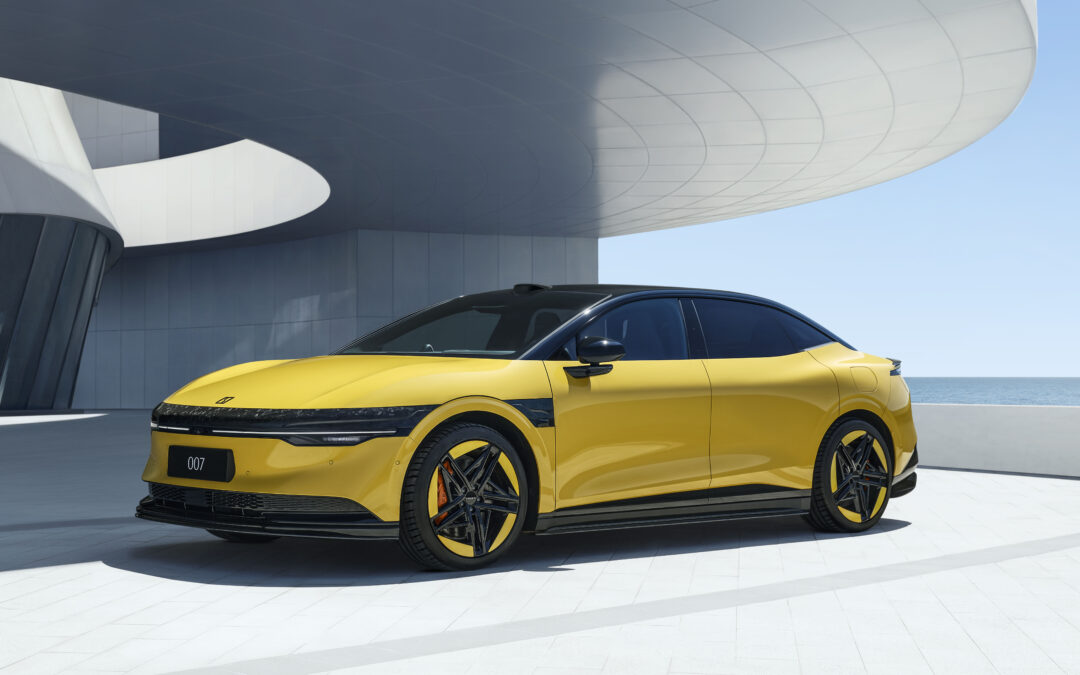
Low prices help. But China’s real success is its Tesla-beating tech
No long content with relying on cheap labour costs, Chinese car makers are aiming for world-leading innovation

Get a GoldenEyeful: Zeekr’s 007
Tesla is often perceived as the technology leader among electric car makers, but that reputation rests to an extent on former glories. A look at five EVs from China reveals a wealth of smart thinking on batteries, chargers, assistance systems and more, combined with a focus on moving swiftly from drawing board to production line.
Just check out the so-called Golden Battery found in the new 007, a rival for the Tesla Model 3 from Zeekr, part of the Geely group (which also includes Volvo, Lotus and Polestar). Zeekr claims to be the fastest-growing electric brand in the world.
The Golden Battery, developed in house, is a 75kWh prismatic LFP power pack capable (on the correct charger) of getting from 10 to 80 per cent charged in just 10 and a half minutes. That makes the 007 the fastest-charging mass-produced EV in the world, claims Zeekr. And Zeekr has been rolling out 1000kW ultra-fast chargers within China, so this isn’t purely academic.
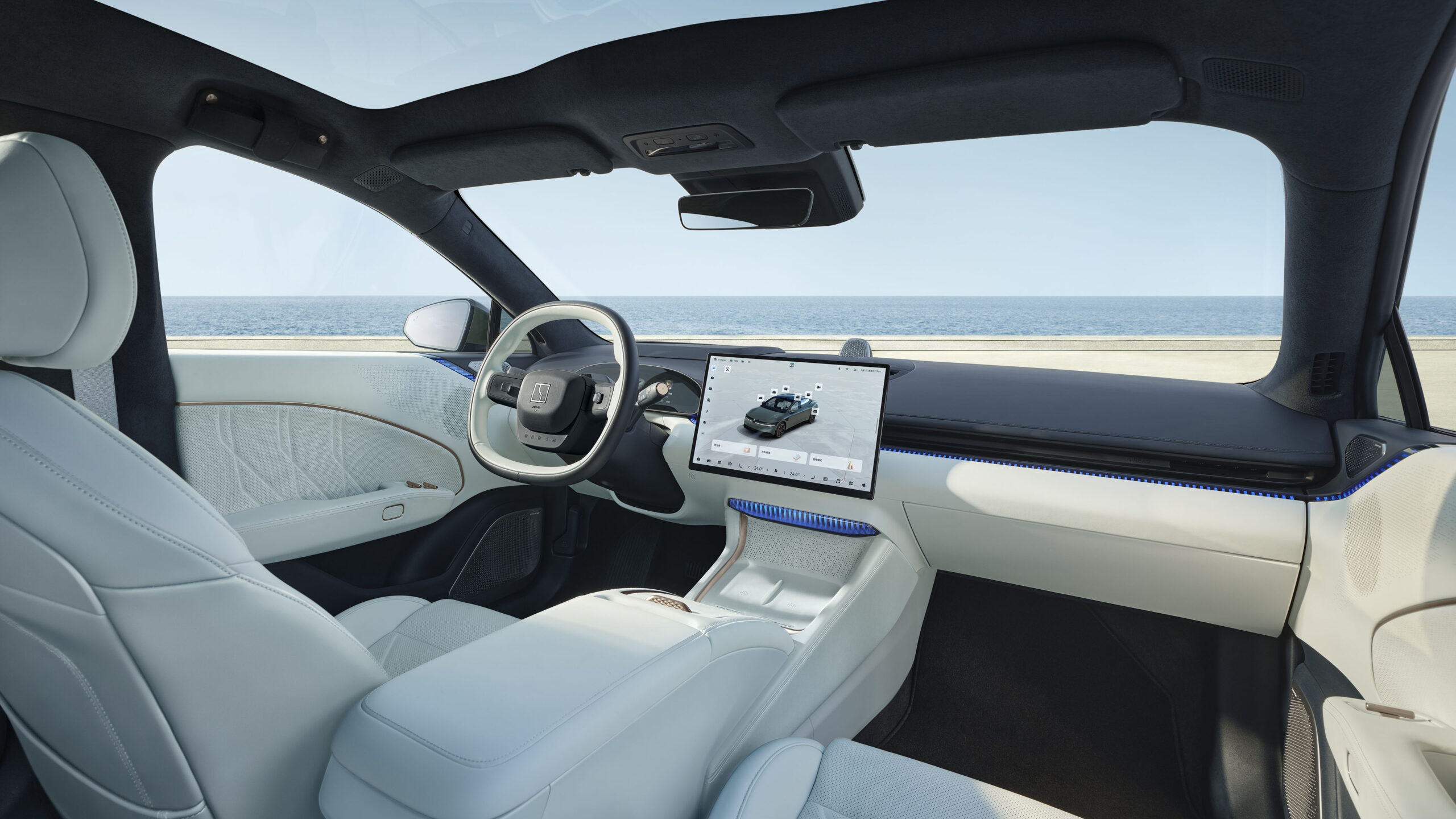
From China With Love: The 007’s flashy interior
The 007 has a range of 427 miles according to CLTC, the Chinese equivalent of WLTP and EPA ratings (unlikely, however, to translate to European and US conditions without losing a few miles); it can add over 300 miles of range inside 15 minutes. That’s way ahead of any Tesla. With a dual-motor set-up producing 637bhp and 524lb ft, it’s also claimed to offer quicker acceleration than a Model 3 Performance.
Inside, it boasts a Model 3-busting 21-speakers, outputting 1900 watts in surround sound, and outside there’s a ‘grille’ that uses over 1700 LEDs to display custom faces, graphics, and even personalised text greetings. Self-driving in urban areas is imminent, too.
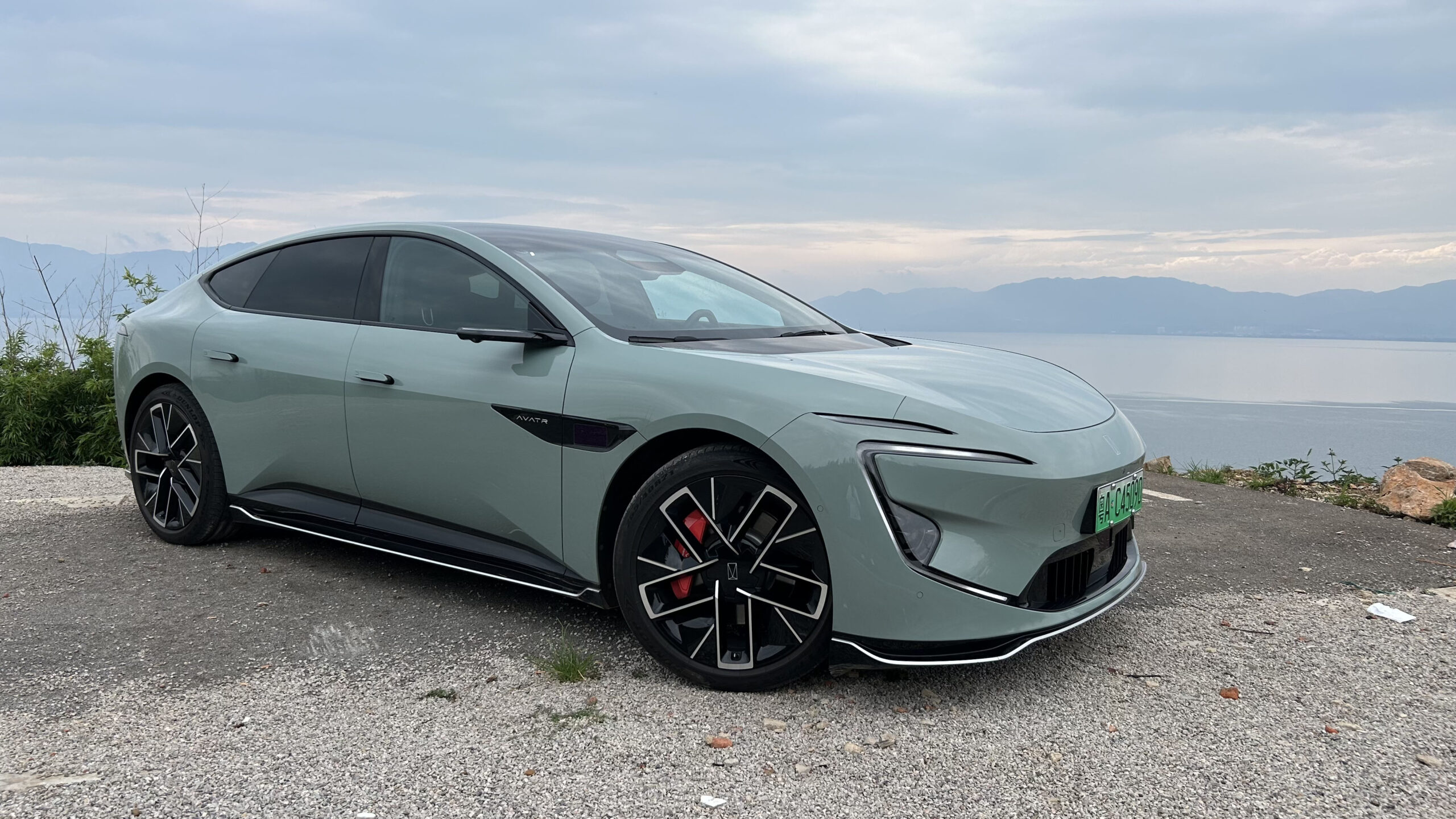
Testing, testing: Avatr’s 12 (pronounced one-two)
Moving on from Zeekr to another vowel-averse Chinese brand, Avatr, we find a rival for the Tesla Model S, the 12 (pronounced one-two). This is claimed to have class-leading autonomous driving technology, in the form of Huawei’s latest Qiankun 3.0 system. Combined with no fewer than three lidar units on the 12, it makes the car capable of driving autonomously around urban roads in China as well as remote valet parking, where it’ll deliver your car to a set parking space without you being inside.
With Tesla’s latest Full Self Driving not available in China, it’s hard to give a direct comparison. But the Huawei/Avatr system has proved itself on China’s crowded and often chaotic roads, so it should at least go toe-to-toe with Tesla.
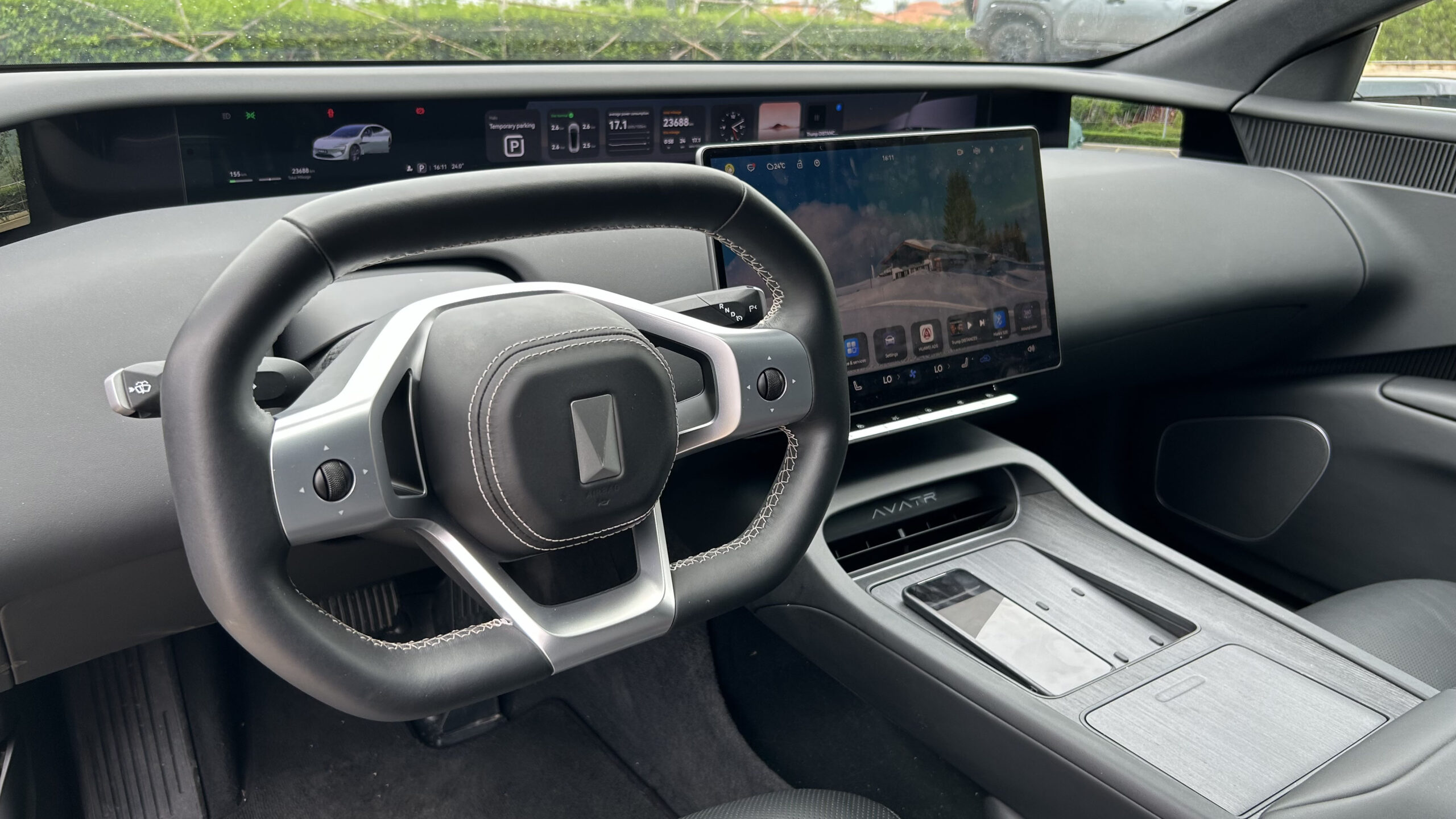
Sat Na’vi: The Avatr 12’s interior
While the centre screen, which runs Huawei’s Harmony OS on a Snapdragon 8295P processor, is a little smaller than the Model S’s at 15.4 inches, compared to 17 inches on the Tesla, the 12 also adds an additional 35.4-inch 4K screen at the base of the windscreen, as well as small screens either side that display the view from the cameras mounted where your wing mirrors would be.
There’s also a digital screen for your rear-view mirror, since the 12 makes do without a rear window, Polestar 4 style.
In addition, a total of 27 speakers from UK-based premium consumer audio brand Meridian, including two in the driver’s headrest, offer one of the most cinematic experiences you’ll find in a car, something you’ll be able to appreciate from the front seats, which lift, tilt, and fully recline at the touch of a button.
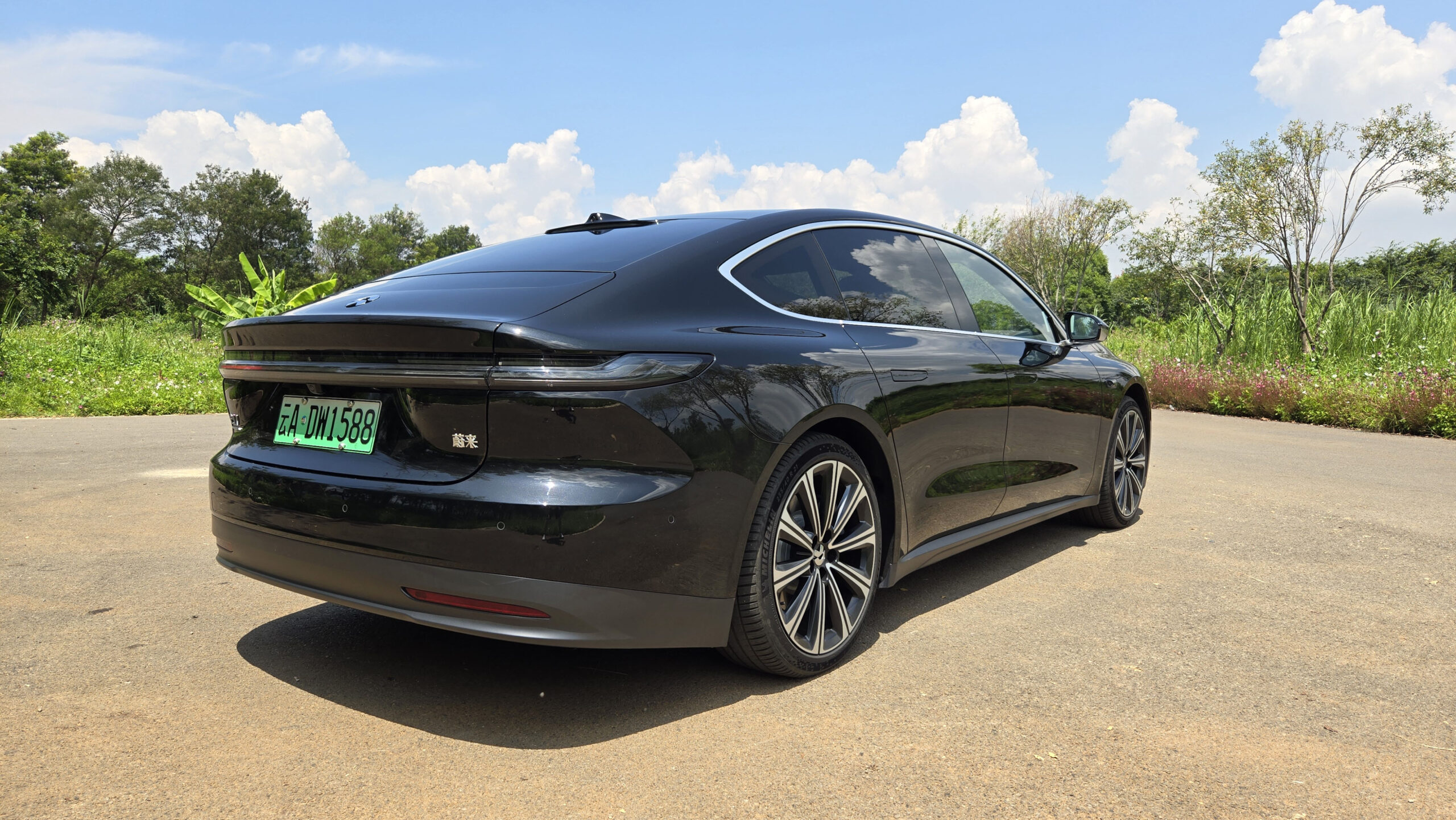
Phone home: The Nio ET7
Tesla’s Model S is starting to look dated, now that some of the competition has moved on quite significantly. None more so than the newly refreshed Nio ET7, which will be heading to Europe in the near future.
Launched in 2022 and updated twice since then, the ET7 is the first car to benefit from Nio’s push further upmarket and now sports a Maybach-busting spec list in addition to the firm’s groundbreaking battery-swap technology.
While Tesla’s expansive Supercharger network has done a great job of spreading the convenience of reliable charging infrastructure over many territories, Nio has taken a different approach: an owner should be able to acquire a fully charged battery in around three minutes in a fully automated process.
Nio’s 2500-plus swap stations have completed more than 50 million swaps since 2018. The network is very much focused on China at the moment – but when the cars come to the UK, so will battery-swap stations.
The best Nio currently offers is a semi-solid-state 150kWh battery, which Nio boss William Li took on a livestreamed 621-mile drive earlier this year. The 100kWh battery in a Model S can’t quite manage 400 miles.
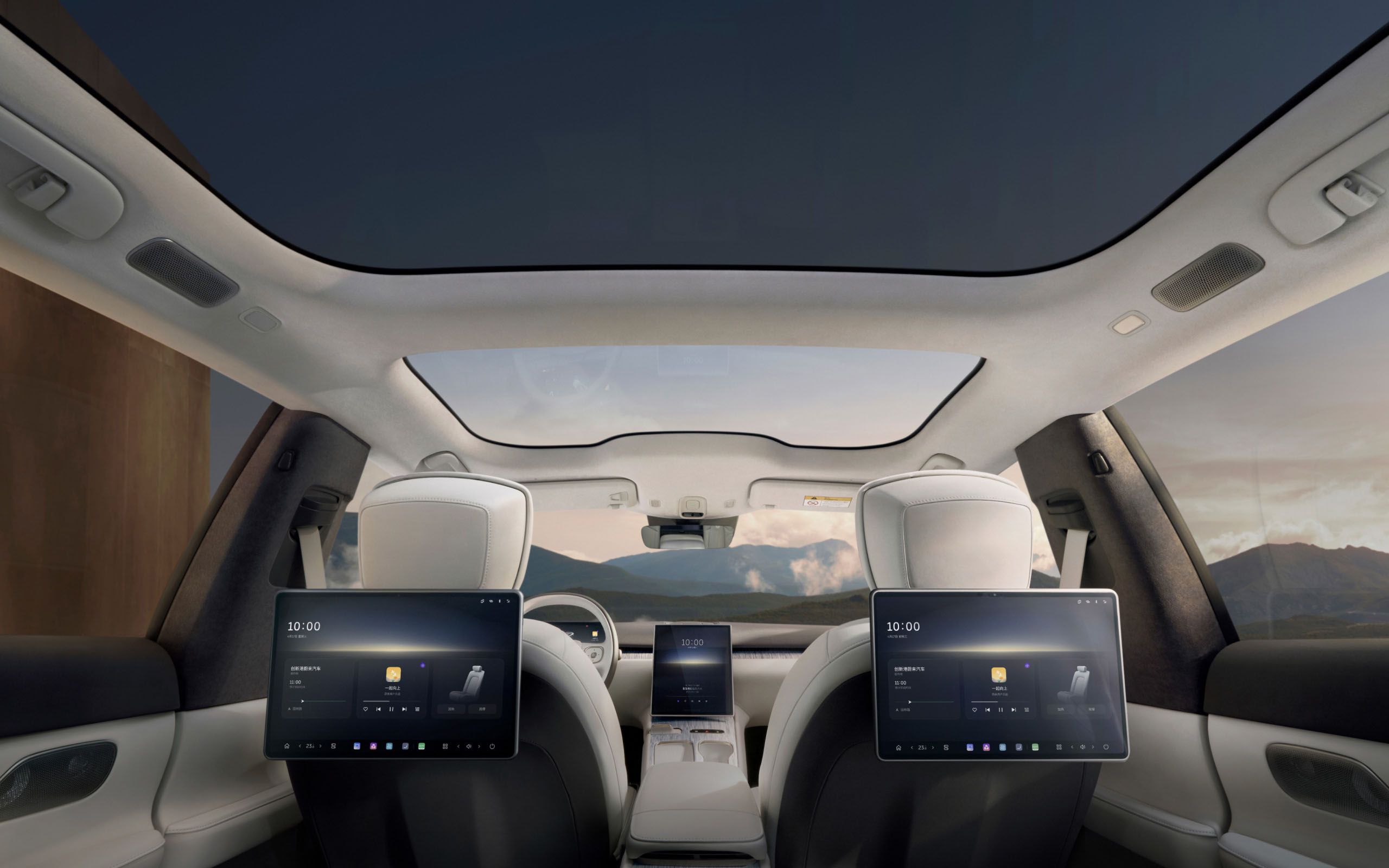
All mod cons: The Nio ET7’s rear seat entertainment
The ET7 also packs some serious kit, including twin 14.5-inch, 3k rear screens, which support TV and film streaming, individual Bluetooth headphone connectivity, and transferring calls from your Nio phone as you enter the car. (That’s right, Nio does phones too.)
With 23 speakers pushing out 2230 watts and surround sound, you might want to skip the headphones and settle back in your 14-way adjustable rear seats with 37º recline plus heating, ventilation and hot stone massage functions, all of which can be specified to the base cushion or backrest, or both together.
And let’s not forget the air suspension that can prioritise rear passenger comfort and automatically adjust for softness when you reach broken-up roads detected by other Nio cars. In China, it’s cheaper than a Model S.
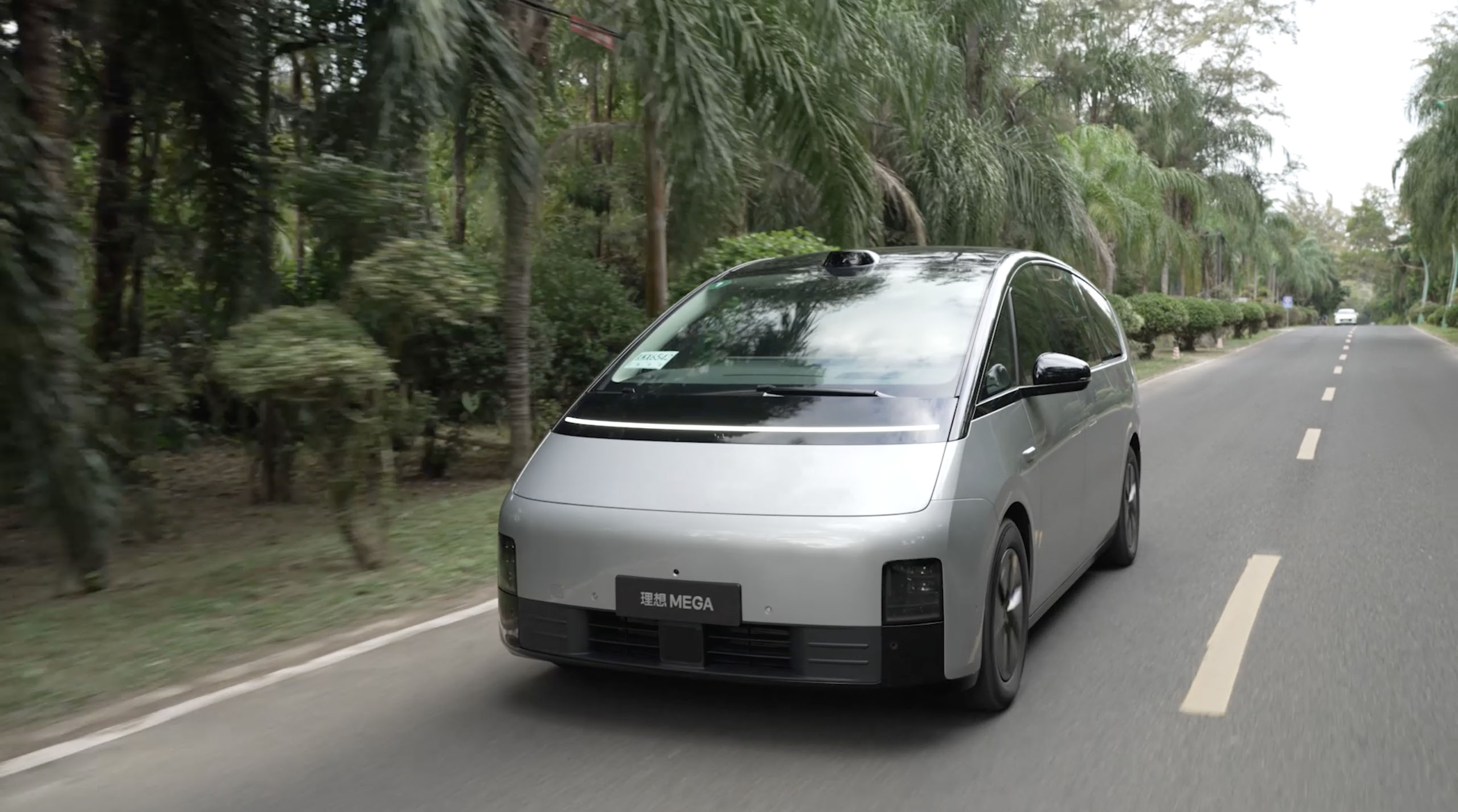
The next big thing: Li’s Mega SUV
The Li Mega is an MPV, launched earlier this year, with bullet-train styling and some remarkable charging speeds for its 102.7kWh battery: a claimed 12 minutes from 10 to 80 per cent.
With a peak charging power of more than 520kW and a curve that never dips under 300kW, the Mega’s range between charges – 441 miles according to CLTC – is helped by a slippery drag coefficient of just 0.215.
But the Mega is more than simply a charging leviathan, it’s a wondrous people mover as well. Li already had the L-series models, luxurious five- and six-seat SUVs with interiors draped from top to bottom in soft-touch materials and packed with family-friendly technology, but the Mega took all that and went fully electric.
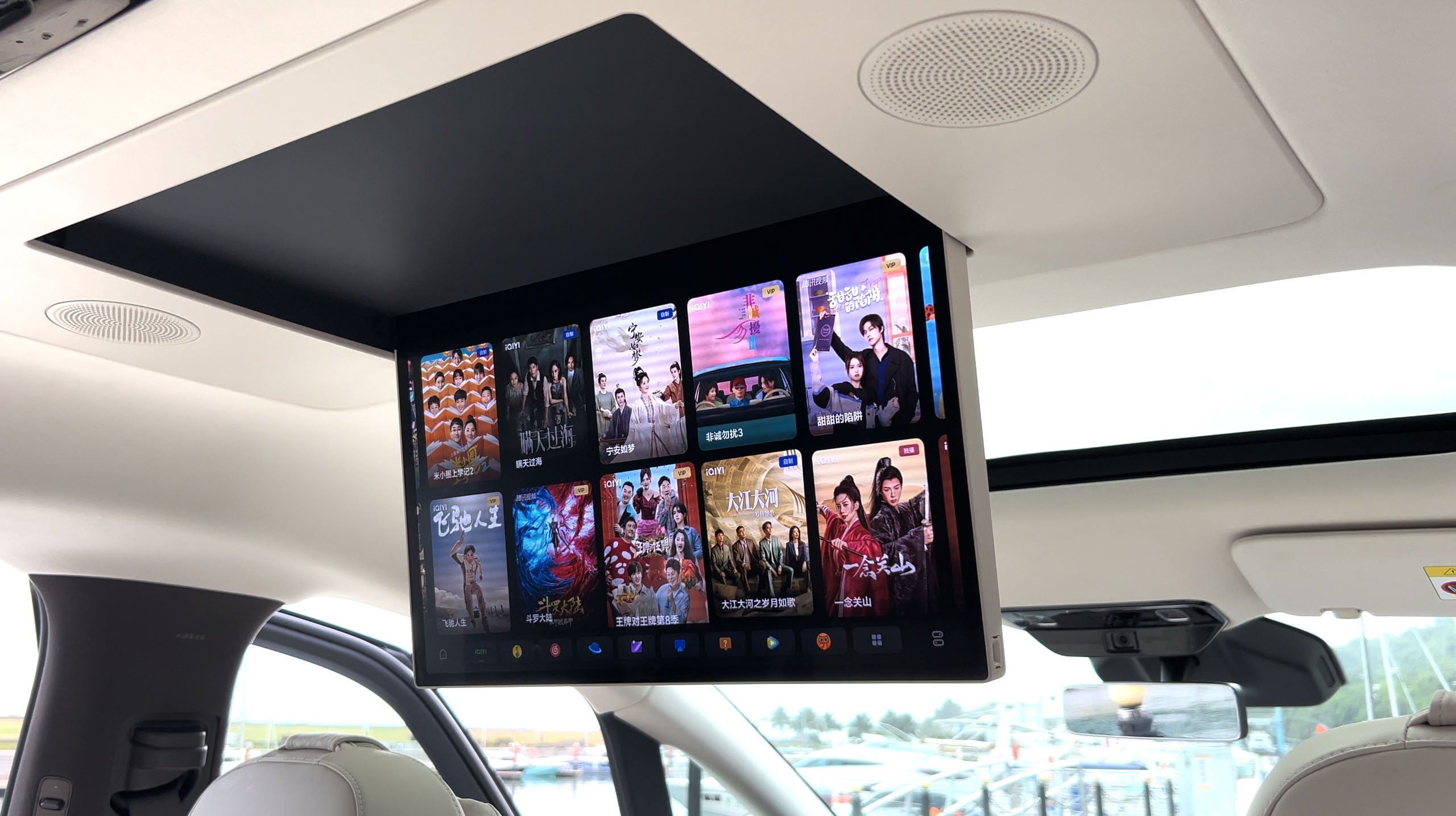
Brill thrills: Mega’s infortaiment centre
While the front seats benefit from a pair of 15.7-inch, 3K screens for entertainment, the second and third rows share a 17-inch, 3K screen that folds down from the roof and can be operated using gesture controls that actually work. There’s a 220-volt socket so you can plug in a PlayStation or a Nintendo Switch and play with up to four players.
Coupled with a 21-speaker sound system pumping out 2160 watts in surround sound with Dolby Vision and Atmos capability, and you’re looking at a veritable private cinema on wheels.
If that wasn’t enough, there’s also a fridge/heater for keeping your snacks and drinks cold or warm, heating for all seven seats, and ventilation and 16-point massage functions for the first and second rows.
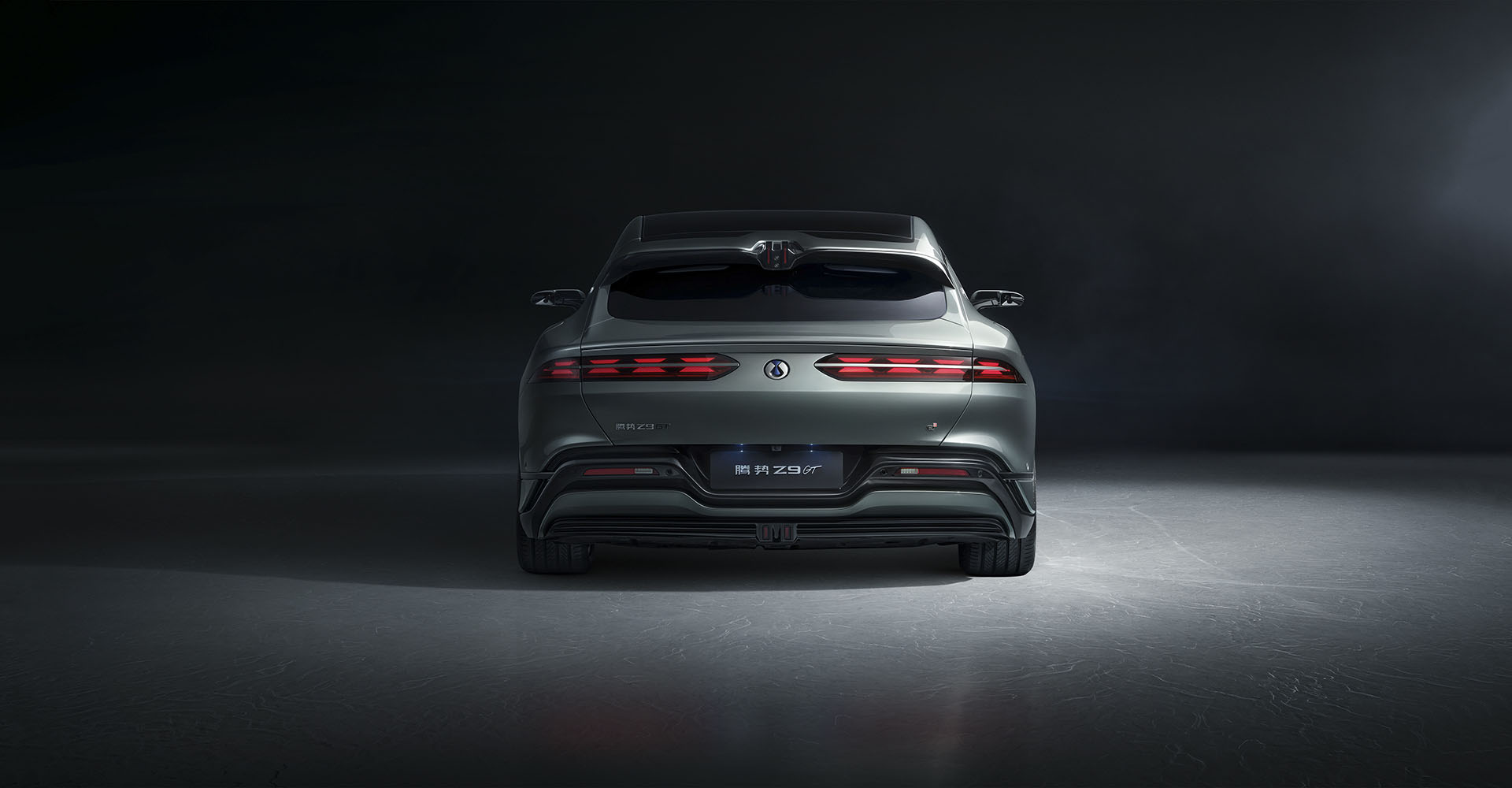
Smooth mover: Denza’s Z9 GT
Denza started out life as a joint venture between BYD and Mercedes-Benz. Poor sales and, frankly, poor products led Mercedes to dial its share down to 10 per cent. But of late the brand has flourished. Its flagship is the Z9 GT, with styling that echoes the Porsche Panamera. It’s available as pure EV or a range extender.
It has rear wheels that can point in opposing directions, giving the ability to pivot the car around one of the front wheels; drive nose first into a parallel parking space, and rotate the rear into position by selecting your chosen angle on the centre screen.
This also enables the Z9 to manoeuvre diagonally through tight spaces and complete a conventional U-turn in just 4.62 metres. Smart.
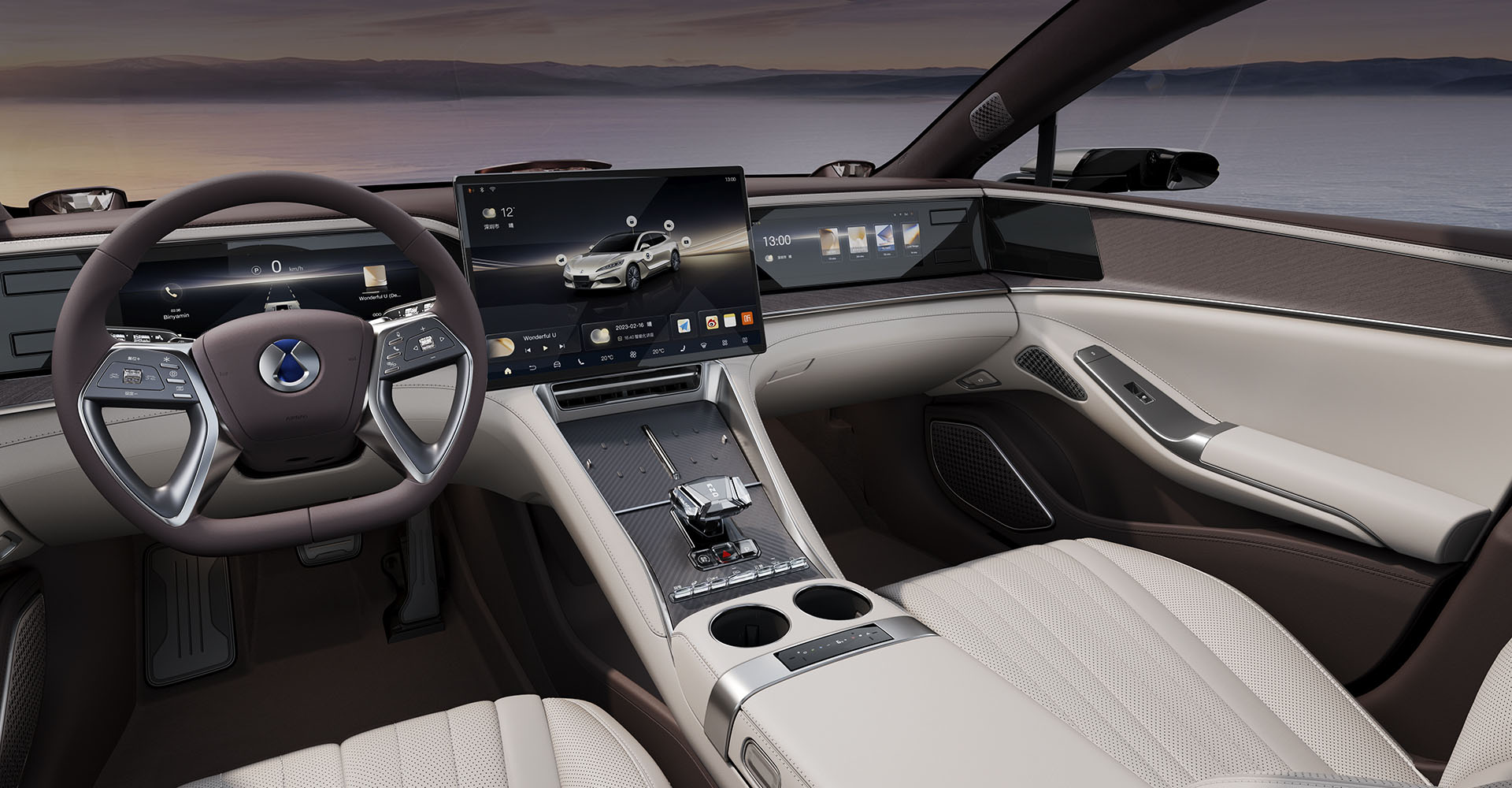
You’ve been Merc’d: The Z9’s plush interior
And there’s also a long list of convenience and infotainment features, with triple screens in the front, two refrigerators, a four-litre cooling and heating unit for front passengers, and a 10-litre cooler in the back.
Throw in heated, ventilated, and massaging seats all round, which can be electrically operated for recline in the back, and a premium sound system from French audio experts Devialet, and you’d be tempted to think that Denza might be trying to show Mercedes how luxury should be done, in a role reversal that illustrates China’s automotive ambition.

